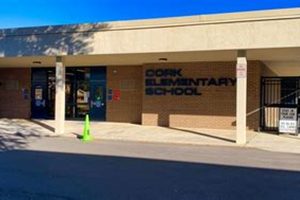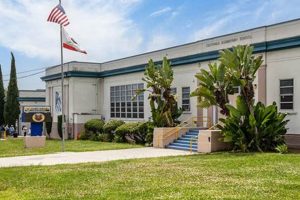Constructing a new elementary school involves substantial financial investment, varying significantly based on factors such as location, size, design, materials, and labor costs. For example, a basic facility in a rural area with standard features will likely have a lower price tag than a state-of-the-art building in a major metropolitan area with specialized classrooms and amenities.
Understanding the financial commitment required for such a project is crucial for effective planning and resource allocation by school districts, government agencies, and other stakeholders. Historically, school construction costs have been influenced by economic conditions, material availability, and evolving educational philosophies impacting building design. This investment represents a commitment to providing future generations with a nurturing learning environment.
This article will further explore the key cost drivers in elementary school construction, including site acquisition, architectural and engineering fees, construction materials, labor, permits, and ongoing maintenance expenses. Additionally, it will examine funding sources and strategies for managing these costs effectively.
Tips for Estimating Elementary School Construction Costs
Accurately estimating expenses is critical for successful school construction projects. The following tips provide guidance for navigating this complex process.
Tip 1: Define Project Scope: Clearly outlining the school’s size, capacity, desired features, and educational specifications is essential for preliminary cost estimations. A detailed needs assessment should precede any budgeting efforts.
Tip 2: Conduct Thorough Site Analysis: Site conditions significantly influence costs. Evaluating factors like topography, soil stability, and utility availability helps avoid unforeseen expenses during construction.
Tip 3: Research Local Construction Costs: Material prices and labor rates vary geographically. Consulting local market data provides a realistic baseline for budget development.
Tip 4: Engage Experienced Professionals: Architects, engineers, and cost estimators possess specialized knowledge to develop accurate budgets and manage potential cost overruns.
Tip 5: Explore Funding Options: Understanding available funding sources, such as bonds, grants, and public-private partnerships, is crucial for securing necessary financial resources.
Tip 6: Consider Life-Cycle Costs: Factor in long-term expenses like maintenance, utilities, and potential renovations to ensure financial sustainability throughout the building’s lifespan.
Tip 7: Implement Value Engineering: Exploring alternative materials and construction methods can optimize costs without compromising quality or functionality.
By adhering to these guidelines, stakeholders can develop realistic budgets, minimize financial risks, and ensure the successful completion of elementary school construction projects. These proactive measures contribute to creating efficient and cost-effective learning environments.
This careful planning ultimately benefits the community by providing a valuable educational resource within budget constraints.
1. Location
Geographic location plays a pivotal role in determining elementary school construction costs. Variances in land values, material availability, labor markets, and local regulations significantly influence project budgets. Understanding these location-specific factors is crucial for accurate cost projections and effective resource allocation.
- Land Acquisition Costs
Land prices vary dramatically across regions. Urban areas or locations with high demand typically command premium prices, significantly impacting overall project costs. Rural or less developed areas may offer more affordable land options. For example, a school site in a densely populated city center will likely be considerably more expensive than a comparable site in a suburban or rural setting.
- Material Availability and Transportation
Construction materials may be more readily available and less expensive in some regions than others. Proximity to manufacturing hubs and distribution networks reduces transportation costs. Conversely, remote locations may necessitate long-distance hauling of materials, adding significant expense. For instance, sourcing lumber in a region with abundant timber resources will likely be more cost-effective than transporting it across the country.
- Labor Market Conditions
Prevailing wage rates and labor availability fluctuate geographically. Areas with strong construction activity or unionized labor forces often experience higher labor costs. Conversely, regions with lower construction demand and readily available workforce may offer more competitive labor rates. This difference can substantially impact the overall construction budget.
- Local Regulations and Permitting
Building codes, zoning regulations, and permitting requirements differ by locality. Stringent regulations or complex permitting processes can increase project timelines and associated costs. Streamlined permitting processes and less stringent building codes can expedite construction and reduce expenses. Navigating these local nuances is essential for accurate budgeting and project management.
Careful consideration of these location-specific factors is paramount for developing realistic cost estimates for elementary school construction projects. Accurately assessing land costs, material availability, labor market dynamics, and regulatory requirements allows for effective budget management and successful project delivery. Overlooking these critical elements can lead to significant cost overruns and project delays, underscoring the importance of incorporating location-based analysis into initial planning stages.
2. Size and Capacity
The size and capacity of an elementary school directly influence construction costs. Larger facilities accommodating more students necessitate greater material quantities, longer construction timelines, and increased labor demands. Understanding this relationship is fundamental to accurate cost projections and effective budget management.
- Square Footage
The total square footage dictates the extent of materials required for structural components, interior finishes, and exterior cladding. A larger footprint translates to higher material expenses. For instance, a 60,000-square-foot school will inherently require more concrete, steel, and roofing materials than a 40,000-square-foot school, directly impacting overall costs.
- Student Capacity
Designing for a higher student population necessitates more classrooms, restrooms, and communal spaces like cafeterias and libraries. Increased capacity demands more extensive infrastructure, including plumbing, electrical, and HVAC systems, impacting construction costs accordingly. Accommodating 500 students requires significantly more resources than a school built for 300 students.
- Specialized Spaces
Incorporating specialized spaces such as science labs, art rooms, music rooms, or gymnasiums adds to the overall size and cost of the facility. These specialized areas often require specific equipment, materials, and configurations, resulting in higher construction expenses compared to standard classrooms. A school with dedicated science and computer labs will typically have higher construction costs than one with only standard classrooms.
- Site Development
Larger schools require more extensive site development, including parking lots, playgrounds, athletic fields, and landscaping. Increased site work contributes to higher land development costs, influencing the overall project budget. A school with expansive athletic fields and playgrounds will have higher site development costs than one with a smaller footprint.
These factors collectively demonstrate the direct correlation between size and capacity and the ultimate cost of building an elementary school. Accurately assessing these elements during the planning phase ensures realistic budgeting and facilitates effective resource allocation, leading to successful project completion within established financial parameters.
3. Design and Materials
Design and material choices significantly influence elementary school construction costs. Architectural complexity, sustainable features, and material durability directly impact project budgets. Understanding these relationships enables informed decision-making and optimized resource allocation.
Architectural complexity affects both design fees and construction expenses. Intricate designs featuring non-standard shapes, custom elements, or complex structural systems require more extensive design work and specialized construction techniques, increasing overall costs. A school with a complex, multi-level design will generally cost more to build than a simpler, single-story structure.
Sustainable building practices, while offering long-term environmental and economic benefits, often entail higher upfront costs. Incorporating features like solar panels, geothermal heating and cooling, or rainwater harvesting systems adds to initial construction expenses but can reduce operating costs over time. A school designed to LEED certification standards may have higher initial costs due to specialized materials and systems, but can realize savings through reduced energy and water consumption over the building’s lifespan.
Material selection plays a critical role in both aesthetics and budget. High-end finishes like marble flooring or custom millwork contribute to a more luxurious appearance but come at a premium price. Durable, low-maintenance materials such as concrete or brick may have higher upfront costs but offer longer lifespans and reduced maintenance expenses over time. Choosing durable, easy-to-clean flooring materials like vinyl tile or polished concrete can reduce long-term maintenance costs compared to more delicate options like carpeting.
Balancing aesthetic considerations, functional requirements, and budget constraints is crucial in material selection. Opting for cost-effective yet durable materials can achieve a balance between quality and affordability. For example, specifying high-quality, durable roofing materials may increase initial expenses but minimize the need for frequent replacements, resulting in long-term cost savings. Similarly, choosing energy-efficient windows and insulation can reduce heating and cooling costs over the building’s lifespan, offsetting potentially higher upfront expenses.
Strategic decision-making regarding design and materials optimizes resource allocation and ensures cost-effectiveness without compromising functionality or aesthetics. Analyzing life-cycle costs, considering long-term maintenance expenses, and evaluating the return on investment for sustainable features contribute to informed choices that balance initial construction costs with long-term value.
4. Labor Costs
Labor costs represent a substantial portion of elementary school construction budgets. Fluctuations in regional labor markets, specialized trade requirements, and project timelines significantly influence overall expenses. Understanding these dynamics is crucial for accurate cost projections and effective budget management.
Regional variations in prevailing wage rates, unionization levels, and labor availability directly impact project costs. Areas with high construction activity or strong union presence typically experience higher labor costs compared to regions with lower demand and readily available workforce. For example, construction labor costs in a major metropolitan area with a robust unionized construction sector will likely exceed those in a rural area with a less competitive labor market. This geographic variance necessitates careful consideration during budget development.
Specialized trades, such as electricians, plumbers, and HVAC technicians, often command higher wages due to their specialized skills and certifications. The complexity of modern school buildings, incorporating sophisticated electrical systems, plumbing networks, and climate control systems, necessitates the involvement of these specialized trades. Their expertise adds to labor costs but is essential for ensuring the functionality and safety of the finished structure. For instance, installing advanced fire suppression systems or integrating smart building technologies requires specialized expertise, impacting labor expenses.
Project timelines also influence labor costs. Extended construction schedules, often resulting from unforeseen delays or complex designs, can lead to increased labor expenses due to prolonged on-site presence of construction crews. Efficient project management and adherence to established timelines minimize labor costs by optimizing workforce utilization and reducing unnecessary on-site time. A well-managed project that adheres to its schedule minimizes the likelihood of escalating labor costs due to delays.
Accurately estimating and managing labor costs requires careful consideration of regional market conditions, specialized trade requirements, and project timelines. Proactive strategies, such as engaging local contractors, negotiating competitive labor rates, and implementing efficient project management practices, can mitigate potential cost overruns and ensure the project’s financial viability. Understanding these dynamics contributes to developing realistic budgets and delivering successful school construction projects within established financial parameters.
5. Site Preparation
Site preparation significantly influences the overall cost of constructing an elementary school. Adequate preparation ensures a stable foundation, efficient construction processes, and long-term building integrity. Ignoring this crucial phase can lead to substantial cost overruns and jeopardize project timelines. Several factors within site preparation contribute to the final project expense.
Topography and Soil Conditions: Leveling uneven terrain, mitigating soil instability, and addressing drainage issues require specialized equipment and engineering expertise, adding to project costs. Rocky terrain necessitates blasting or excavation, increasing expenses compared to level, stable ground. A school site located on a steep slope will require extensive grading and retaining walls, adding significantly to site preparation costs compared to a flat site. Soil composition analysis informs foundation design. Poor soil stability necessitates ground improvement techniques like soil stabilization or deep foundations, impacting budgets. For example, building on expansive clay soils may require specialized foundation design and construction to prevent future structural issues, increasing overall expenses.
Utilities and Infrastructure: Extending utilities such as water, sewer, electricity, and gas to the construction site entails significant costs. Distance from existing infrastructure, terrain challenges, and permitting requirements further influence expenses. Connecting a remote site to existing utility lines will be more expensive than connecting a site in a developed area with readily available infrastructure. Upgrading existing infrastructure to accommodate the school’s demands also adds to the budget. For instance, increasing transformer capacity to meet the school’s electrical needs contributes to site preparation expenses.
Demolition and Removal: Existing structures or vegetation on the site necessitate demolition and removal prior to construction. The extent of demolition, waste disposal requirements, and environmental remediation needs influence costs. Demolishing an existing building and removing debris adds to the project budget compared to building on a vacant lot. Environmental remediation, such as asbestos abatement, further increases expenses. For example, removing underground storage tanks and contaminated soil adds significant cost to site preparation.
Careful site assessment, thorough planning, and proactive management of these factors are essential for controlling site preparation costs and ensuring the project’s financial viability. Ignoring these critical elements during the initial planning stages can lead to unforeseen expenses, delays, and compromised structural integrity, ultimately jeopardizing the entire project. Investing in comprehensive site preparation lays a solid foundation for efficient construction, minimizes future maintenance issues, and contributes to the long-term value and sustainability of the elementary school facility.
6. Equipment and Technology
Equipping a modern elementary school with essential equipment and technology represents a significant investment within the overall construction budget. From classroom furniture and teaching aids to computer labs and network infrastructure, these resources play a crucial role in creating effective learning environments. Understanding the various components and associated costs is essential for informed decision-making and responsible resource allocation.
- Classroom Technology
Interactive whiteboards, projectors, document cameras, and sound systems enhance instructional delivery and student engagement. Costs vary depending on features, brand, and quantity. A school opting for top-of-the-line interactive displays in every classroom will incur higher expenses than one choosing more basic projector-based systems. Integrating assistive technologies for students with special needs further adds to the budget.
- Computer Labs and Devices
Equipping computer labs with desktop computers, laptops, or tablets, along with necessary software and peripherals, represents a substantial investment. Network infrastructure, including servers, routers, and cabling, must support these devices and facilitate internet access. A school deploying a one-to-one device program will face significantly higher costs than one with a shared computer lab model. Software licensing fees and ongoing maintenance expenses further contribute to the technology budget.
- Furniture and Fixtures
Durable, ergonomically designed furniture contributes to student comfort and learning effectiveness. Desks, chairs, tables, storage units, and library shelving must accommodate varying age groups and learning styles. Investing in high-quality, adjustable furniture may incur higher upfront costs but can reduce long-term replacement needs and enhance student well-being. A school prioritizing flexible learning spaces with modular furniture will likely have different cost considerations than one with traditional fixed classroom layouts.
- Security and Safety Systems
Security cameras, access control systems, fire alarm systems, and emergency communication systems are essential for ensuring student and staff safety. Integrating these systems into the building’s infrastructure requires specialized expertise and adds to project costs. A school prioritizing advanced security features like facial recognition technology or integrated emergency notification systems will incur higher expenses than one with more basic security measures. Ongoing system maintenance and monitoring further contribute to the security budget.
These equipment and technology investments directly influence the overall cost of building an elementary school. Balancing educational needs, budget constraints, and long-term value requires careful planning and informed decision-making. Prioritizing essential equipment, exploring cost-effective solutions, and considering future technology upgrades ensures a functional, adaptable, and secure learning environment for students and staff while managing expenses effectively.
7. Contingency Planning
Contingency planning plays a crucial role in managing the financial uncertainties inherent in elementary school construction projects. Unforeseen circumstances, such as unexpected site conditions, material price fluctuations, or regulatory changes, can significantly impact project budgets. A well-defined contingency plan allocates funds to address these potential cost overruns, protecting the project’s financial viability and ensuring its successful completion. Without adequate contingency planning, unexpected expenses can lead to project delays, compromised quality, or even project termination.
Several factors necessitate contingency planning. Geotechnical investigations may reveal unforeseen subsurface conditions, like unstable soil or bedrock, requiring costly remediation measures. Material prices can fluctuate due to market volatility or supply chain disruptions, impacting overall construction expenses. Changes in building codes or regulatory requirements during the construction phase can necessitate design modifications or additional construction work, adding to the project budget. A realistic contingency plan considers these potential risks and allocates funds accordingly.
For example, a project encountering unexpected rock formations during excavation may require blasting or specialized excavation techniques, incurring additional expenses not initially budgeted. A sudden increase in steel prices due to global market conditions can impact the cost of structural components. A mid-project change in fire safety regulations might necessitate installing additional fire suppression systems, adding to the overall cost. A contingency fund allows the project to absorb these unexpected costs without jeopardizing completion.
Effective contingency planning involves careful risk assessment, realistic cost estimation, and ongoing budget monitoring. Collaborating with experienced professionals, such as cost estimators and construction managers, ensures the contingency plan adequately addresses potential risks and aligns with industry best practices. Regularly reviewing and adjusting the contingency plan throughout the project lifecycle, based on evolving conditions and potential new risks, maintains its effectiveness in mitigating financial uncertainties. This proactive approach protects the project from unforeseen financial challenges and ensures its successful completion within reasonable budget parameters.
Frequently Asked Questions
This section addresses common inquiries regarding elementary school construction costs, providing clarity and insights for stakeholders involved in such projects.
Question 1: What are the primary cost drivers in elementary school construction?
Key cost drivers include location, size and capacity, design complexity, material choices, labor rates, site preparation needs, equipment and technology requirements, and regulatory compliance. Each factor contributes significantly to the overall project budget and requires careful consideration during planning.
Question 2: How do location factors influence construction costs?
Land acquisition costs, material availability and transportation expenses, labor market conditions, and local regulations and permitting requirements vary geographically, influencing overall project budgets. Urban areas tend to have higher costs compared to rural locations due to increased land values and labor rates.
Question 3: How does building size affect project expenses?
Larger schools necessitate more materials, labor, and site development, directly impacting construction costs. Specialized spaces like science labs or gymnasiums further increase expenses due to specific equipment and construction requirements.
Question 4: What role do design and material choices play in cost management?
Architectural complexity influences design fees and construction methods. Sustainable features, while beneficial long-term, can increase initial costs. Material durability and aesthetics affect both upfront expenses and long-term maintenance costs. Balancing functionality, aesthetics, and budget constraints is essential in material selection.
Question 5: How can labor costs be managed effectively?
Regional variations in labor rates, specialized trade requirements, and project timelines impact labor expenses. Engaging local contractors, negotiating competitive rates, and adhering to project schedules can help manage these costs.
Question 6: Why is contingency planning important in school construction projects?
Contingency planning allocates funds to address unforeseen circumstances like unexpected site conditions, material price fluctuations, or regulatory changes. This financial buffer protects the project from potential cost overruns and ensures its successful completion within a reasonable budget.
Understanding these factors provides a comprehensive overview of the complexities influencing elementary school construction costs. Careful planning, informed decision-making, and proactive cost management are crucial for delivering successful projects within established budgetary parameters.
For further information and detailed analysis, consult with experienced professionals in school construction and cost estimation.
Conclusion
Constructing an elementary school represents a substantial financial undertaking. This exploration has highlighted the multifaceted nature of these costs, emphasizing the interplay of location, size, design, materials, labor, site preparation, equipment, technology, and contingency planning. Each element contributes significantly to the overall project budget, necessitating careful consideration and strategic decision-making throughout the planning and execution phases. Ignoring any of these factors can lead to inaccurate cost projections, budget overruns, and compromised project outcomes.
Investing in a new elementary school signifies a commitment to future generations. A thorough understanding of the factors influencing construction costs empowers stakeholders to make informed decisions, allocate resources effectively, and deliver high-quality learning environments that serve students and communities for years to come. Continued exploration of cost-effective construction methods, sustainable building practices, and innovative funding models will further enhance the ability to provide optimal educational facilities within reasonable budget constraints.







